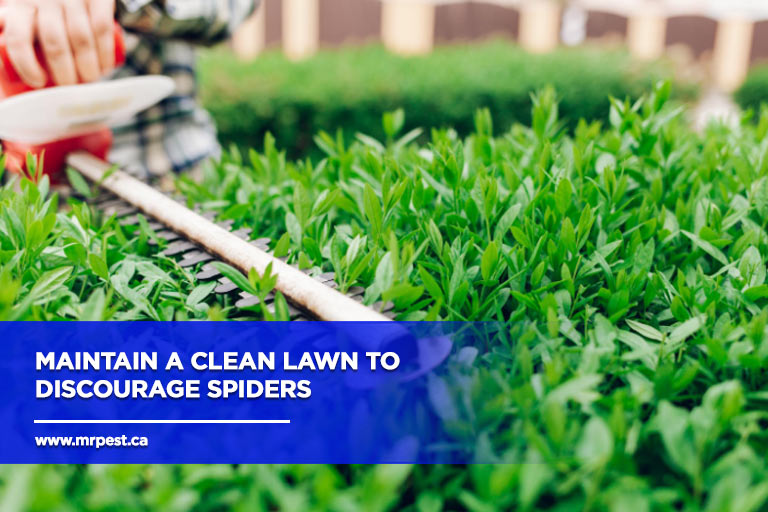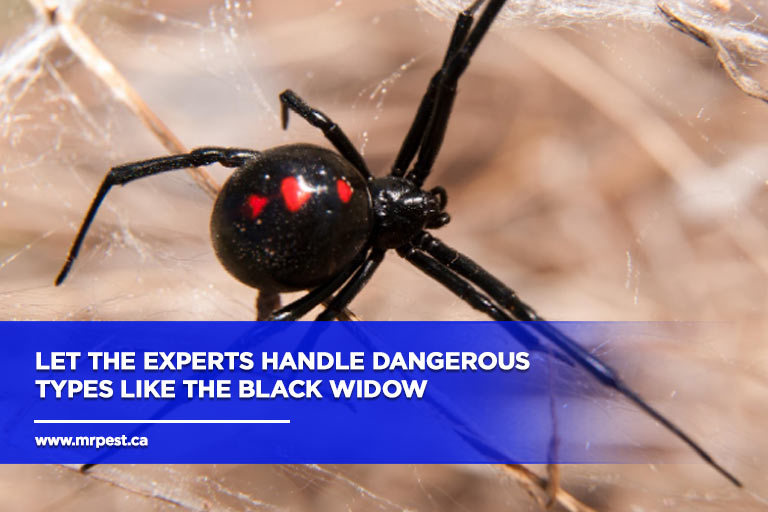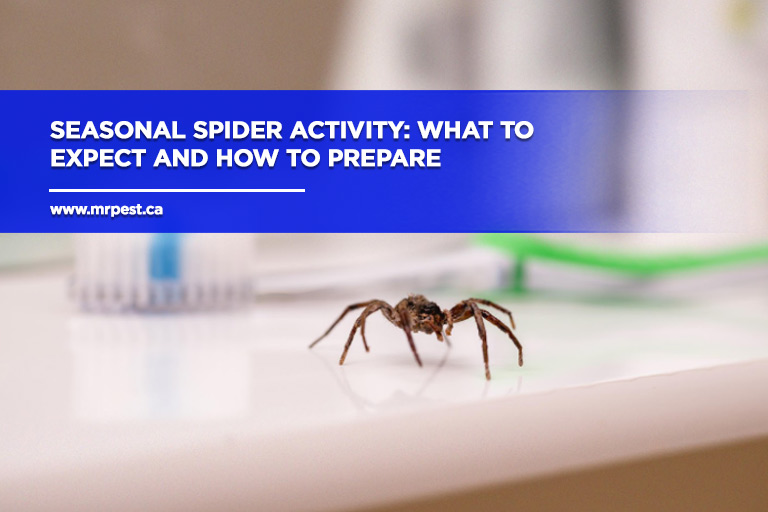As the seasons change, so does the activity of various pests, including spiders. Understanding the patterns of seasonal spider activity can help homeowners stay ahead of potential infestations and ensure their homes remain safe and comfortable.
Types of Spiders by Season
Understanding which spiders are active during different seasons can help you prepare and take appropriate measures to keep them at bay.
Common Spiders Emerging in Spring
- Jumping Spiders: Known for their excellent vision and jumping abilities, these spiders become more active as temperatures rise. Common species include the Bold Jumping Spider (Phidippus audax).
- Wolf Spiders: These ground-dwelling hunters start emerging from their winter hideouts. They are known for their speed and hunting prowess.
Behaviour and Breeding Patterns
- Spring marks the beginning of the breeding season for many spiders. You might notice an increase in spider webs and egg sacs around your home as spiders prepare to reproduce.
Spiders Most Active in Summer
- Orb-Weaver Spiders: These spiders are known for their large, intricate webs and are most visible in the summer. Species like the Cross Orb-Weaver (Araneus diadematus) are common.
- House Spiders: Common indoor spiders that are more noticeable as they hunt for insects. The common house spider (Parasteatoda tepidariorum) is frequently encountered.
Increased Outdoor Spider Activity
- With warmer temperatures, spiders become more active outdoors. You may find more webs in gardens, under eaves, and in other sheltered outdoor areas.
Spiders Seeking Indoor Shelter During Fall
- Yellow Sac Spiders: These spiders seek warm, dry places indoors as temperatures drop.
- Cellar Spiders: Often found in basements and crawl spaces, these spiders migrate indoors in search of warmth. The Long-Bodied Cellar Spider (Pholcus phalangioides) is a typical example.
Typical Fall Spider Activity
- Fall is when many spiders, including those seeking warmth, are most likely to enter homes.
Reduced Spider Activity During Winter
- Spider activity significantly decreases in winter as many species enter a state of dormancy or drastically reduce their movements.
Winter Survival Strategies of Spiders
- Some spiders produce antifreeze-like substances to survive cold temperatures. Others might be found in warmer, protected indoor environments.
Understanding Spider Behaviour
Recognizing how spiders behave throughout the year is vital to effectively managing their presence in your home.
- Breeding Seasons
Spiders typically breed during the warmer months. According to research posted in ResearchGate, spider activity tends to increase with rising temperatures. For instance, in agricultural settings, spider activity was low during colder months (like December) but increased significantly as temperatures rose in spring.
This pattern suggests a strong correlation between temperature and spider activity levels. As temperatures climb, spiders become more active, mate, and lay eggs, resulting in a noticeable increase in spider webs and egg sacs.
- Hunting and Feeding Habits
Spiders are opportunistic feeders, and their hunting and feeding habits are influenced by seasonal changes. During warmer months, spiders actively hunt for prey, which often includes other insects.
You might notice more spiders in your home during spring and summer as they search for food. In colder months, their feeding activity decreases, and they may hide in undisturbed areas to conserve energy.
- Shelter Seeking
As temperatures drop in the fall, spiders begin seeking indoor shelter to escape the cold. This behaviour is common among species like the Yellow Sac Spider and the Long-Bodied Cellar Spider.
They often find refuge in basements, attics, and other secluded indoor spaces. Understanding this migration pattern can help you take preventive measures to keep spiders out of your living areas.
Preventive Measures
Taking proactive steps can significantly reduce spider activity in and around your home. Here are some effective preventive measures to keep spiders at bay throughout the year.
Inspect and Repair Entry Points
- Check your home for any cracks or gaps in walls, windows, and doors.
- Use caulk or weatherstripping to seal these openings and prevent spiders from entering.
Maintain a Clean Home
- Regularly vacuum to remove spider webs, egg sacs, and potential hiding spots.
- Declutter areas like basements, attics, and storage spaces where spiders tend to seek shelter.
Maintain Your Lawn

- Trim bushes, shrubs, and trees away from your home’s exterior to minimize outdoor spider habitats.
- Keep grass short and remove debris such as wood piles, leaves, and rocks that can attract spiders.
Store Outdoor Items Properly
- Store firewood, gardening tools, and other outdoor items away from the house and off the ground to reduce potential spider shelters.
- Use sealed containers for outdoor storage to keep spiders out.
Use Natural Repellents
- Use essential oils, such as peppermint, tea tree, and eucalyptus, mixed with water to spray around entry points and common spider hideouts.
- Place cedar chips, vinegar, and citrus peels strategically around the home to deter spiders naturally.
When to Call Professional Help
While preventive measures can significantly reduce spider activity, there are times when professional intervention is necessary. Knowing when to call in experts can save you time, effort, and ensure the safety of your home.
Recognize the Signs

- Frequent sightings of spiders, especially dangerous ones like the Brown Recluse or Black Widow.
- Numerous spider webs in and around your home, particularly in high-traffic areas.
- Discovery of multiple egg sacs, indicating a growing population.
Benefits from Professional Pest Control
Engaging professional pest control services offers numerous advantages in managing spider infestations effectively and safely.
Expertise and Effective Treatment Options
- Professional pest control technicians have the knowledge and tools to identify and eradicate spider infestations effectively.
- They can provide targeted treatments that are safe for your family and pets while being highly effective against spiders.
Safety Considerations
- Handling potentially dangerous spiders, such as the Brown Recluse, can be risky. Professionals have the experience and equipment to manage these situations safely.
- For residents in areas like Midland, seeking pest control in Midland ensures you get local experts who understand the specific spider species and challenges in your region.
Staying Proactive
- Regular inspections by a professional pest control service can help detect and address spider problems before they become severe.
- Scheduled treatments and maintenance can keep your home spider-free throughout the year.
Stay Ahead of Spider Season
By understanding seasonal spider activity and taking proactive measures, you can keep your home safe and spider-free. For expert spider control in Midland, contact Mr Pest Control at (705) 739-7378. Let us handle the pests so you can enjoy a comfortable home all year round!



